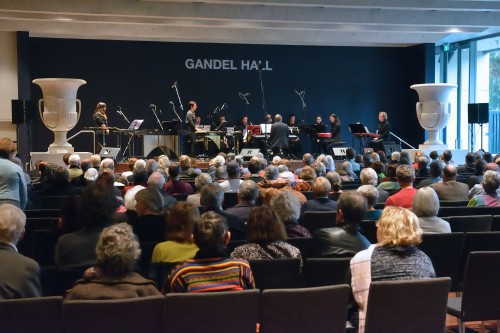“MAIS ce n’est pa la musique” – but it is not music!
This was the offensive slur hurled at Philip Glass by French colleagues prior to his return to New York from Paris. There he had studied with the legendary Nadia Boulanger and began his association with Ravi Shankar and the renowned tabla player Alla Rakha, who together initiated Glass into the intricacies of classical Indian music.
Be assured that those French colleagues were completely wrong!
Not only is this music but it is music that revolutionised western art music of the second half of the 20th century. Repudiating the dissonant new music that appeared following the Second World War, Glass, along with numerous others, began to look towards a return to consonance. Rhythm was similarly rethought, moving away from the arrhythmic gestures of this period towards a pulsing sound more related to world music traditions and rock music than classical precedents.
This new music was labelled as Minimalist, although some preferred the term ‘Process Music’.
No matter what the name, the end result of these new approaches is a hypnotic, almost trance-inducing music that demands a different way of listening. Melodies appear and disappear, some actually being played and some manifesting like an “audio hologram” as a result of melodic fragments intersecting.
A radical new music requires a shift in listening habits and this concert was skilfully programmed to slowly introduce its audience to this new sonic world.
Claire Edwardes of Ensemble Offspring began the concert with a splendid rendition of 1+1, composed for finger percussion on tabletop. The extraordinary variety of sounds produced had me wondering whether it was indeed an amplified tabletop or an electronic percussion pad being played. No matter, it was a fine beginning.
Two Pages was written in the same year (1968) as 1+1 and was performed by keyboardist Gabi Sultana. As someone who has been listening to the music of Glass for four and a half decades. I was stunned. This was as good a performance of this piece as one is ever likely to hear. The performer’s focus and clarity of the composer’s vision coupled with her prodigious technique made for an extraordinary musical experience. I suspect that for me, it will remain the definitive version.
A series of three pieces written the following year (1969) – Music in Similar Motion, Music in 5ths and Music in Contrary Motion – were next performed by Ensemble Offspring
Each of these pieces is quite long and makes great demands on the players, both physically and mentally. The ensemble rose to the occasion with spirited and exciting versions of all three.
I must confess, however, to a preference for the first two pieces for despite a fine performance by the players, Music in Contrary Motion reminded me that there is something within its construction that doesn’t quite work. This, however, is a compositional problem and does not take away from the skill of the performance.
Knee Plays 1-5, from Glass’ opera Einstein on the Beach was, after a short resetting of the stage, performed by The Song Company with YAFF Vocalists. This was the least convincing performance of the concert. The performers seemed at times to be struggling with the complexities of Glass’ musical world and there were particular tuning issues, although there were some beautiful moments in the later sections.
Given that by then the concert had exceeded its “two hour, no interval” advertised time and that the last composition, Music with Changing Parts, described as the longest piece on the program, was still to come, an exodus of many audience members began. This was an unfortunate miscalculation in programming. I suspect that many who had begun to enter, understand and enjoy this different sound world were now feeling overwhelmed.
Music with Changing Parts, written in 1970, was indeed the longest piece in the concert but it was played with such effervescent joy by Ensemble Offspring that, despite the odd performer losing their place before quickly regaining it, the music became transcendental, following the path of the earlier works with their turbo-charged rhythmic propulsion, yet now with an overlay of free floating elements that danced in and out and around. This was Glass’ music at its finest!
All photos by Peter Hislop
The post Glass’ music at its finest appeared first on Canberra CityNews.


